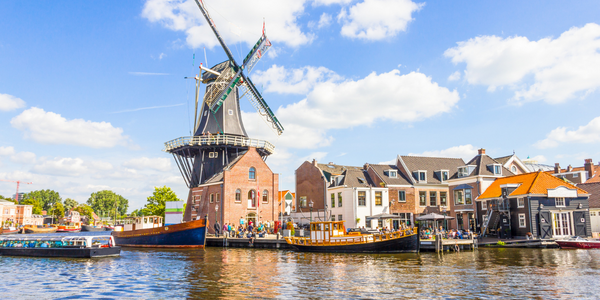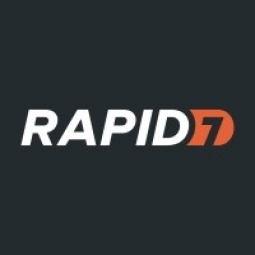Customer Company Size
Large Corporate
Region
- America
Country
- United States
Product
- InsightUBA
- Nexpose
- Metasploit
Tech Stack
- Vulnerability Scanning
- Penetration Testing
- User Behavior Analytics
Implementation Scale
- Enterprise-wide Deployment
Impact Metrics
- Cost Savings
- Productivity Improvements
- Customer Satisfaction
- Employee Satisfaction
Technology Category
- Cybersecurity & Privacy - Endpoint Security
- Cybersecurity & Privacy - Network Security
- Analytics & Modeling - Predictive Analytics
Applicable Industries
- Cities & Municipalities
- Security & Public Safety
Applicable Functions
- Facility Management
- Business Operation
Use Cases
- Intrusion Detection Systems
- Remote Asset Management
Services
- System Integration
- Training
About The Customer
The City of Corpus Christi, Texas, employs roughly 3,500 people and operates a unique infrastructure that includes various departments such as HR, IT, water, and police. Bob Jones, the Information Security Manager, was tasked with building a comprehensive security program from scratch. The city’s infrastructure is complex, resembling about 30 separate SMBs under a larger parent company, each with different requirements and compliance regulations. Bob's role involves identifying risks, providing recommendations, and performing duties of an analyst, engineer, and penetration tester. His mission includes promoting internal education and awareness about security risks, establishing credibility with senior management, and ensuring tight alignment between security and IT teams.
The Challenge
Bob Jones, the Information Security Manager for the City of Corpus Christi, Texas, faced the challenge of increasing security awareness across the organization and detecting and investigating attacks more easily. The city’s infrastructure is unique, akin to about 30 separate SMBs operating under a larger parent company, each with different requirements and compliance regulations. Bob's role was multifaceted, involving duties of an analyst, engineer, and penetration tester. He had to change an embedded culture and establish credibility with the CIO and IT Director. The primary challenge was the lack of visibility into assets on the Corpus Christi network, making it difficult to accurately qualify or quantify the level of risk. Bob needed to prioritize remediation to add value and avoid placing a greater burden on the business.
The Solution
Bob Jones implemented Rapid7’s suite of security solutions, including Nexpose, Metasploit, and InsightUBA, to mitigate risks across all of Corpus Christi’s assets. Nexpose was chosen for its comprehensive reporting features and ability to enumerate software installed on vulnerable machines, saving significant time. The relationship with Rapid7 deepened over time, leading to the purchase of Metasploit Pro, which offered automation and closed-loop vulnerability validation features. This allowed Bob to demonstrate real risks and motivate action. InsightUBA was later added to detect and investigate attacks targeted at users, providing actionable information about threats and simplifying the discovery of risky user behavior. The tool proved invaluable in detecting multiple-location VPN logins and other potential threats, allowing Bob to investigate and respond quickly.
Operational Impact
Quantitative Benefit

Case Study missing?
Start adding your own!
Register with your work email and create a new case study profile for your business.
Related Case Studies.

Case Study
Turning A Stadium Into A Smart Building
Honeywell created what it called the “intelligent system” for the National Stadium in Beijing, China, turning the venue for the opening and closing events at the 2008 Summer Olympics into a “smart building.” Designed by highly controversial artist Ai Weiwei, the “Bird’s Nest” remains one of the most impressive feats of stadium architecture in the world. The 250,000 square meter structure housed more than 100,000 athletes and spectators at a time. To accommodate such capacity, China turned to Honeywell’s EBI Integrated Building Management System to create an integrated “intelligent system” for improved building security, safety and energy efficiency.
.png)
Case Study
Smart Street Light Network (Copenhagen)
Key stakeholders are taking a comprehensive approach to rethinking smart city innovation. City leaders have collaborated through partnerships involving government, research institutions and solution providers. The Copenhagen Solutions Lab is one of the leading organizations at the forefront of this movement. By bringing together manufacturers with municipal buyers, the Copenhagen Solutions Lab has catalyzed the development and deployment of next-generation smart city innovations. Copenhagen is leveraging this unique approach to accelerate the implementation of smart city solutions. One of the primary focus areas is LED street lighting.

Case Study
Buoy Status Monitoring with LoRa
The Netherlands are well-known for their inland waterways, canals, sluices and of course port activities. The Dutch Ministry of Infrastructure indicates that there are thousands of buoys and fixed items in and near water environments that would profit from IoT monitoring. One of the problems with buoys for example, is that they get hit by ships and the anchor cable breaks. Without connectivity, it takes quite some time to find out that something has happened with that buoy. Not to mention the costs of renting a boat to go to the buoy to fix it. Another important issue, is that there is no real-time monitoring of the buoys at this moment. Only by physically visiting the object on the water, one gains insight in its status.

Case Study
China Mobile Smart Parking
Smart Parking, powered by NB-IoT technology, is making it easier for drivers to find free parking spots. Cities can better manage their parking assets and maximize the revenue available to them as a result. Drivers searching for parking create congestion and pollution by circling and hunting for available parking. Smart Parking services are able to significantly ease these problems by guiding a driver directly to a parking space.

Case Study
Barcelona Case Study
Barcelona’s heavy traffic and its associated high levels of pollution were the primary factors that motivated some companies and universities to work on strategies for improving traffic in the city centre. Bitcarrier is one of the technologies involved in the In4Mo Project, whose main objective is to develop the applications that form the core of smart mobility, one of the fundamental pillars of the smart city concept.




